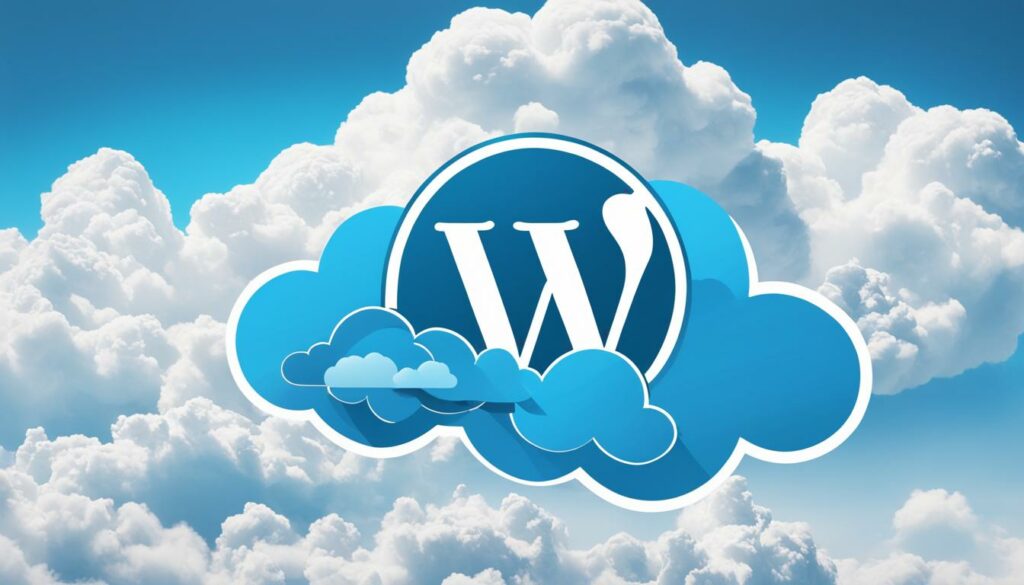Welcome to the world of web hosting scalability! If you’re looking to expand your online presence, cater to a growing user base, and ensure a consistently smooth website experience, scalability is the key. In this article, we’ll delve into the challenges you may encounter and the solutions that can help you achieve scalable web hosting.
Key Takeaways:
- Scaling your website improves performance, accommodates more users, increases availability, and boosts speed.
- Website scalability can be achieved through horizontal scaling, vertical scaling, or automatic scaling.
- Estimating website traffic, financing the scaling process, and optimizing website performance are common challenges.
- Scaling your website is essential for handling unexpected traffic surges and ensuring business growth.
- Choose scalable hosting providers like RedSwitches for flexible hosting solutions that allow easy upgrades.
The Challenges of Web Hosting Scalability
While scaling your website is essential for its growth, it can present various challenges. Estimating website traffic, financing the scaling process, and improving website performance are the main hurdles you may encounter.
Estimating website traffic can often be a complex task. It’s important to regularly track your website’s traffic and user behavior to accurately gauge the demand. By monitoring trends and utilizing analytics tools, you can better understand when to scale up and meet the growing traffic requirements.
Financing the scaling process is another significant challenge. Scaling a website can be costly, particularly when adding additional servers or hardware components. Careful budget planning is crucial to ensure that you have the necessary resources to support the scaling efforts without experiencing financial strain.
Improving website performance is also a challenge that arises during the scaling process. Scaling your website doesn’t automatically guarantee enhanced performance. You may need to take additional steps to optimize your website and ensure it can handle increased traffic effectively. This could involve reducing the number of plugins, optimizing image sizes, or implementing caching mechanisms.
Efficiently addressing these challenges will contribute to a successful website scaling process, enabling your website to accommodate a larger user base, remain financially viable, and provide an optimal user experience.
Note: The challenges of web hosting scalability can appear daunting, but with careful planning and implementation, you can overcome them and unlock the full potential of your website.
Reasons to Scale Your Website
Scaling your website is essential for achieving sustainable growth and maximizing its potential. By scaling your website, you can accommodate larger user bases, improve website availability, handle unexpected traffic surges, and increase website speed. These advantages are key to enhancing user experience, achieving better search engine rankings, and ultimately driving the success of your online presence.
1. Accommodating Larger User Bases
As your business grows, it’s crucial to ensure that your website can handle the increasing number of visitors. By scaling your website, you can optimize its performance and functionality to accommodate a larger user base. This allows you to meet the demands of your expanding customer base, ensuring seamless user experiences and preventing potential downtime or crashes due to server overload.
2. Higher Website Availability
Improved website availability is another key reason to scale your website. Scaling allows more users to access your website simultaneously without experiencing any slowdowns or delays. This is particularly important during peak traffic periods or when handling unexpected traffic surges. By scaling your website, you can provide consistently high availability, ensuring that users can access your content, products, or services whenever they need them.
3. Handling Unexpected Traffic Surges
One of the greatest challenges for any website is dealing with sudden surges in web traffic. Scaling your website equips you with the resources and infrastructure necessary to handle unexpected spikes in traffic without experiencing downtime or performance issues. By scaling, you can ensure that your website remains accessible and responsive even during these high-demand periods, thereby preserving user experience and minimizing revenue loss.
4. Increased Website Speed
Website speed plays a vital role in user satisfaction and search engine rankings. Slow-loading websites lead to high bounce rates, low user engagement, and poor conversion rates. However, by scaling your website, you can optimize its speed and performance, resulting in faster page load times. This not only improves user satisfaction and encourages longer on-site engagement but also boosts search engine rankings, making your website more discoverable to potential customers.

In conclusion, scaling your website offers compelling reasons to ensure its growth and success. By accommodating larger user bases, improving website availability, handling unexpected traffic surges, and increasing website speed, you can deliver outstanding user experiences, drive organic traffic, and gain a competitive edge in the digital landscape. Whether you opt for horizontal scaling, vertical scaling, or automatic scaling, the choice to scale your website is a strategic investment in its long-term success.
Strategies for Scaling Your Website
When it comes to scaling your website, you have several strategies at your disposal. Understanding these website scaling strategies – horizontal scaling, vertical scaling, and automatic scaling – can help you make informed decisions to meet your website’s growing demands.
1. Horizontal Scaling
Horizontal scaling involves adding additional servers to your web hosting solution, allowing the distribution of incoming traffic and workload across multiple servers. This approach not only improves website availability but also prevents crashes caused by overloading a single server. Consider horizontal scaling if you anticipate a significant increase in traffic and want to ensure a seamless browsing experience for your users.
2. Vertical Scaling
If your current server’s resources are being strained, vertical scaling might be the solution. This strategy involves adding hardware components, such as memory or storage, to your existing server, boosting its performance and capacity. Vertical scaling is an effective approach for handling sudden spikes in traffic or when your website requires additional resources to maintain optimal performance.
3. Automatic Scaling
Automatic scaling offers a hassle-free way to scale your website effectively. It leverages cloud dedicated servers that automatically adjust server resources based on demand. With automatic scaling, you no longer need to worry about manually contacting your hosting provider for upgrades. This strategy ensures cost-efficiency and enables your website to seamlessly handle fluctuating traffic without any additional effort on your part.
Choose the scaling strategy that aligns with your website’s specific needs and anticipated growth. Combining these strategies can also be beneficial, allowing you to maximize the performance, availability, and scalability of your website.
| Strategy | Description | Key Benefits |
|---|---|---|
| Horizontal Scaling | Add additional servers to distribute traffic and workload | – Improved website availability – Prevention of server crashes – Scalability to handle high traffic |
| Vertical Scaling | Add hardware components to boost server performance | – Enhanced server capacity – Improved performance during traffic spikes – Optimal resource utilization |
| Automatic Scaling | Utilize cloud dedicated servers that adjust resources based on demand | – Cost-efficiency – Seamless handling of fluctuating traffic – Elimination of manual resource adjustments |
Conclusion
Scalability is crucial for the growth and success of web applications. By building scalable web applications, businesses can ensure flexibility, enhanced user experience, cost-efficiency, high availability, and a competitive advantage. There are different types of scalability that businesses can leverage to meet their specific needs and goals.
Horizontal scaling involves adding additional servers to distribute traffic and workload across multiple servers, ensuring improved website availability and preventing crashes. Vertical scaling focuses on adding hardware components to boost performance when existing server resources are strained. Elastic scalability, as offered by cloud services, automatically adjusts server resources based on demand.
Database scalability allows businesses to accommodate increasing amounts of data without compromising performance. Geographical scalability enables businesses to expand their reach and serve users in different geographical locations effectively. Finally, network scalability ensures that the network infrastructure can handle the growing traffic and bandwidth requirements.
Choosing the right scalability type for your business is essential to reap the full benefits. Scalability plays a vital role in navigating the fast-paced digital market and meeting customer demands effectively. By investing in scalable web applications, you can stay ahead of the competition, improve user satisfaction, and drive business growth.
FAQ
Q: What is website scaling?
A: Website scaling is the process of improving your website’s performance by adding resources to your hosting server so it can effectively handle more traffic.
Q: Why is website scaling important?
A: Website scaling is important because it allows your website to accommodate a larger user base, increase website availability, handle unexpected traffic surges, and improve website speed
Q: What are the main website scaling strategies?
A: The main website scaling strategies are horizontal scaling, vertical scaling, and automatic scaling.
Q: What is horizontal scaling?
A: Horizontal scaling involves adding additional servers to your hosting solution to distribute the incoming traffic and workload across multiple servers.
Q: What is vertical scaling?
A: Vertical scaling involves adding hardware components to your existing server, such as memory or storage, to boost performance.
Q: What is automatic scaling?
A: Automatic scaling utilizes cloud dedicated servers to host your website and automatically adjusts server resources based on demand.
Q: How can I scale my website effortlessly?
A: To scale your website effortlessly, you can consider using scalable hosting providers like RedSwitches that offer premium dedicated servers and virtual private servers with the ability to upgrade at any time.
Q: What are the main challenges of website scaling?
A: The main challenges of website scaling include estimating website traffic, financing the scaling process, and improving website performance.
Q: How can I estimate website traffic?
A: Estimating website traffic can be difficult, so it’s important to track your website’s traffic regularly and scale up in time to meet the growing demand.
Q: Is scaling my website expensive?
A: Scaling your website can be expensive, so careful budget planning is necessary.
Q: Does scaling my website guarantee improved performance?
A: Scaling your website doesn’t guarantee improved performance, so you may need to take additional steps to optimize your website, such as reducing the number of plugins and optimizing image size.
Q: Why should I consider scaling my website?
A: You should consider scaling your website to accommodate a larger user base, improve website availability, handle unexpected traffic surges, and increase website speed.












